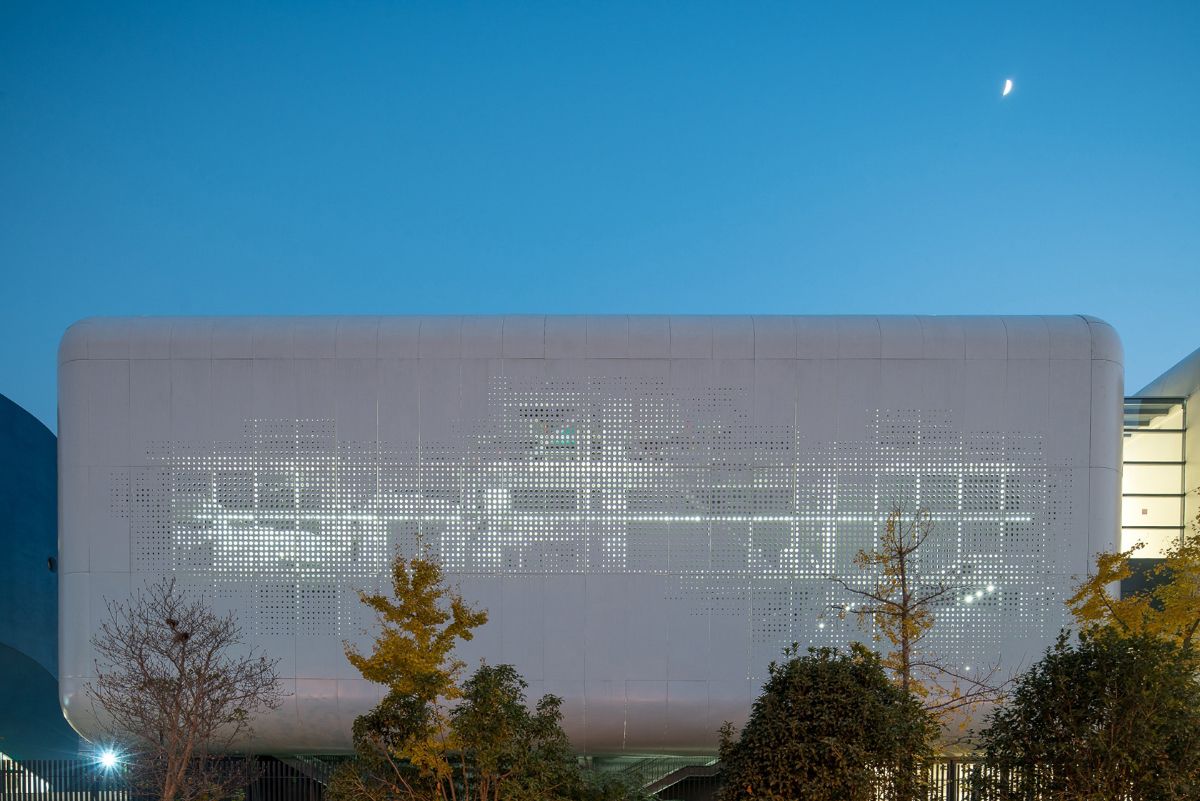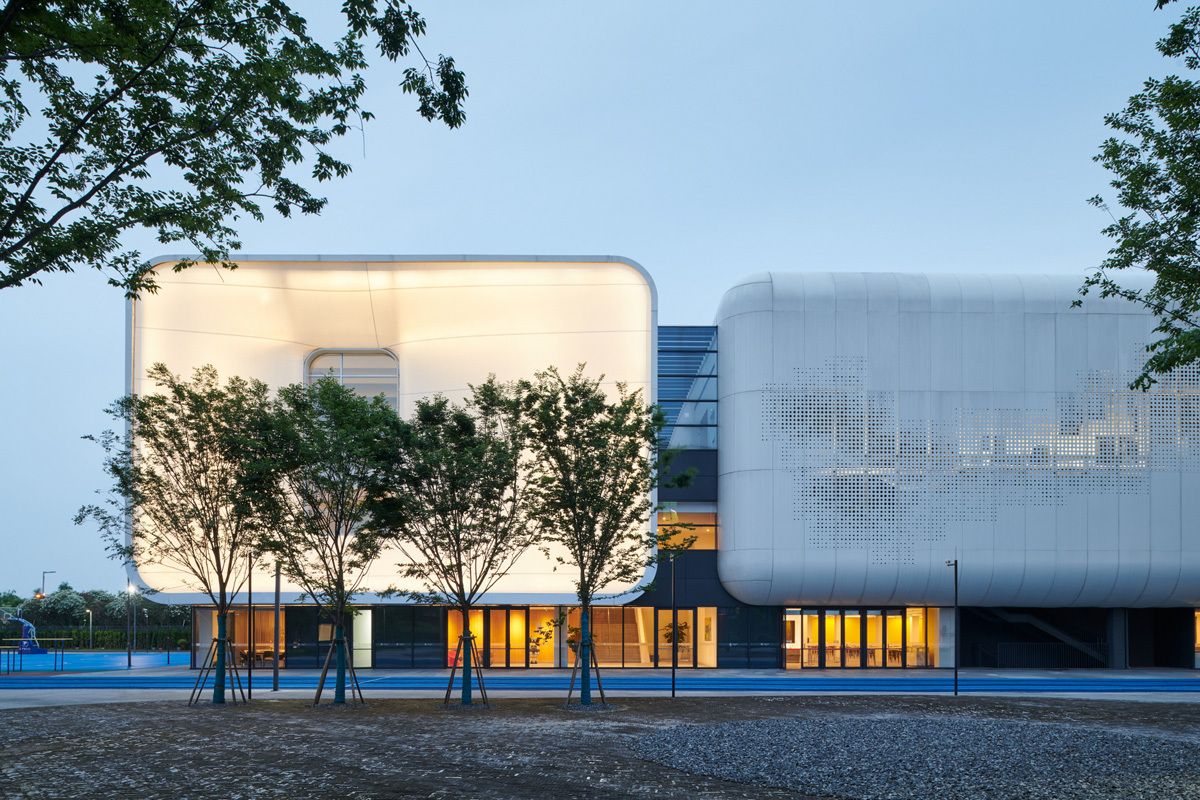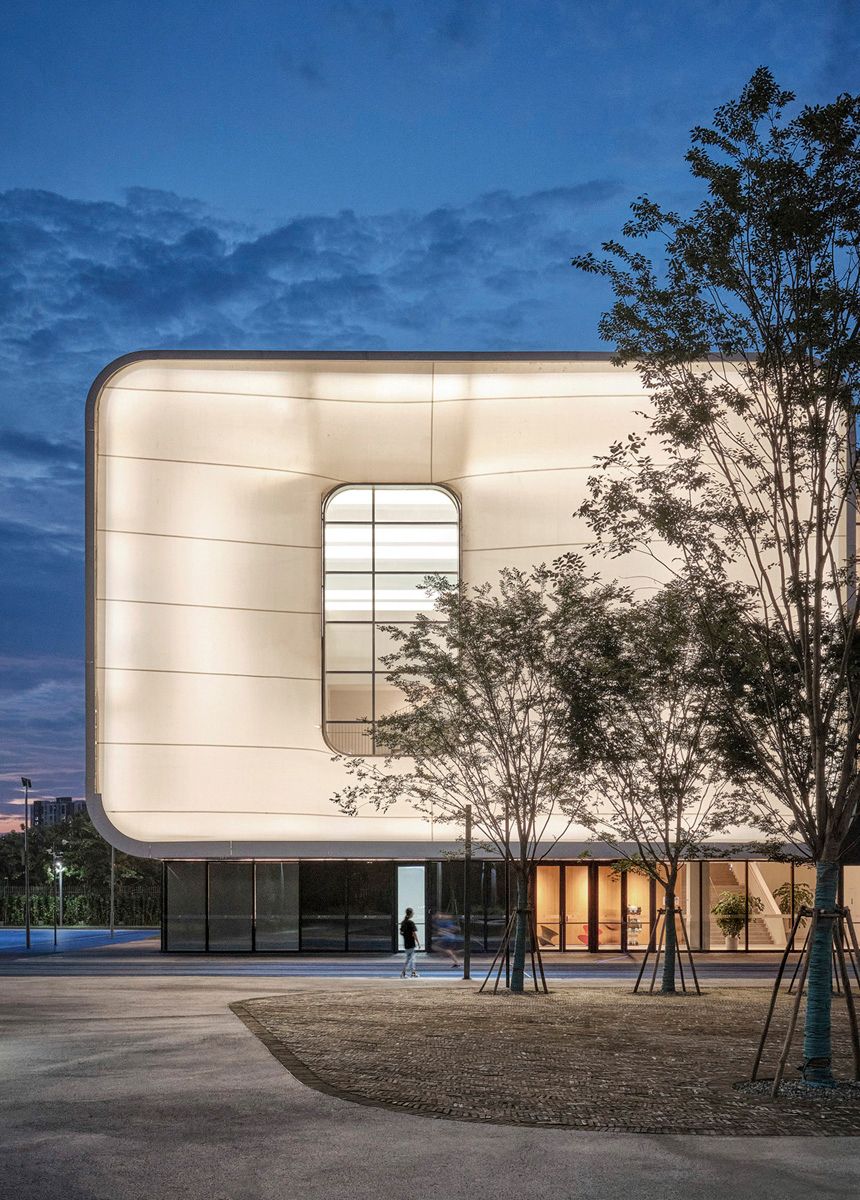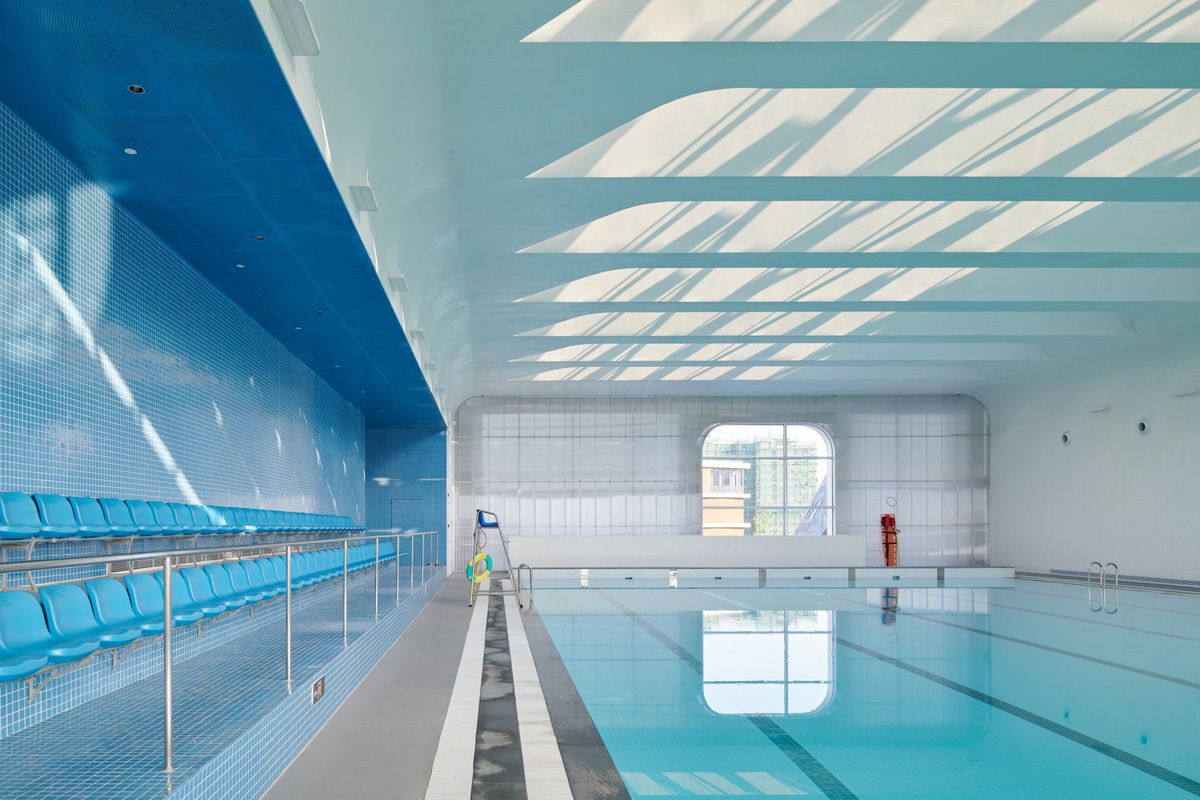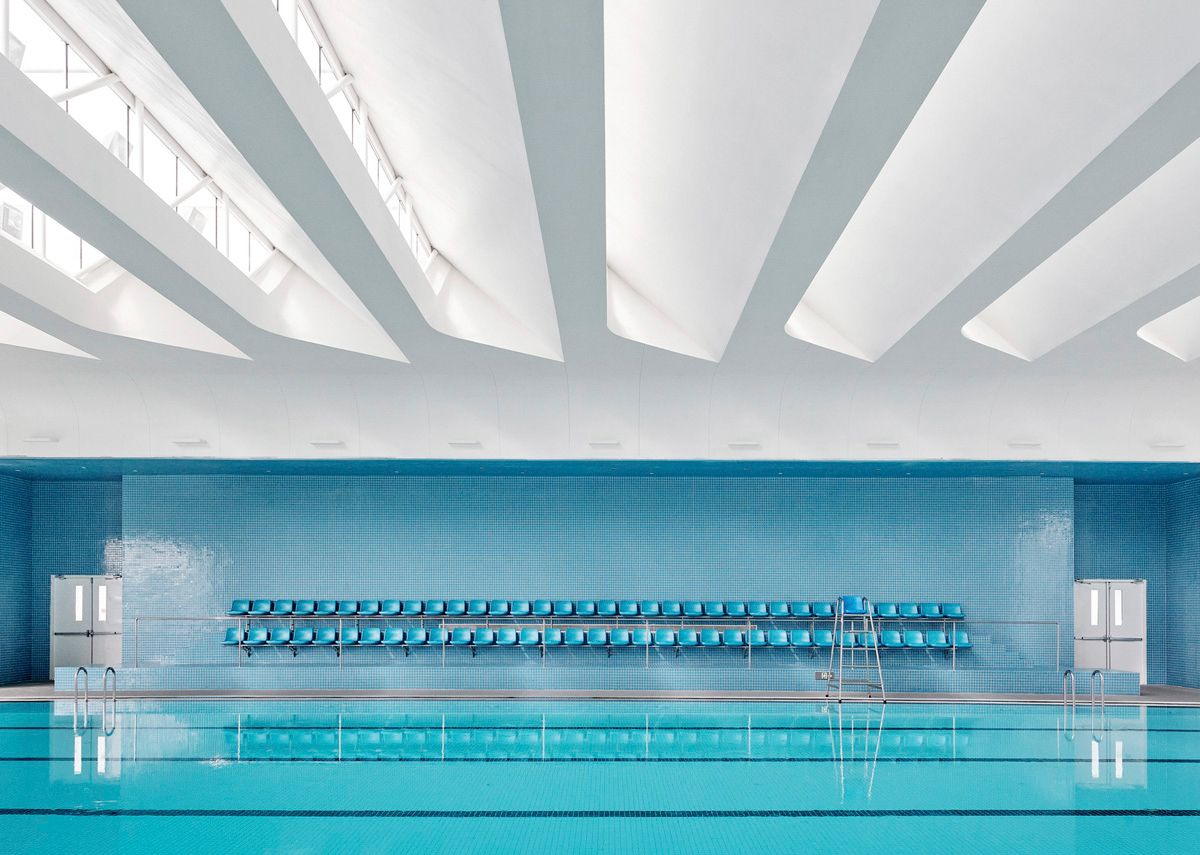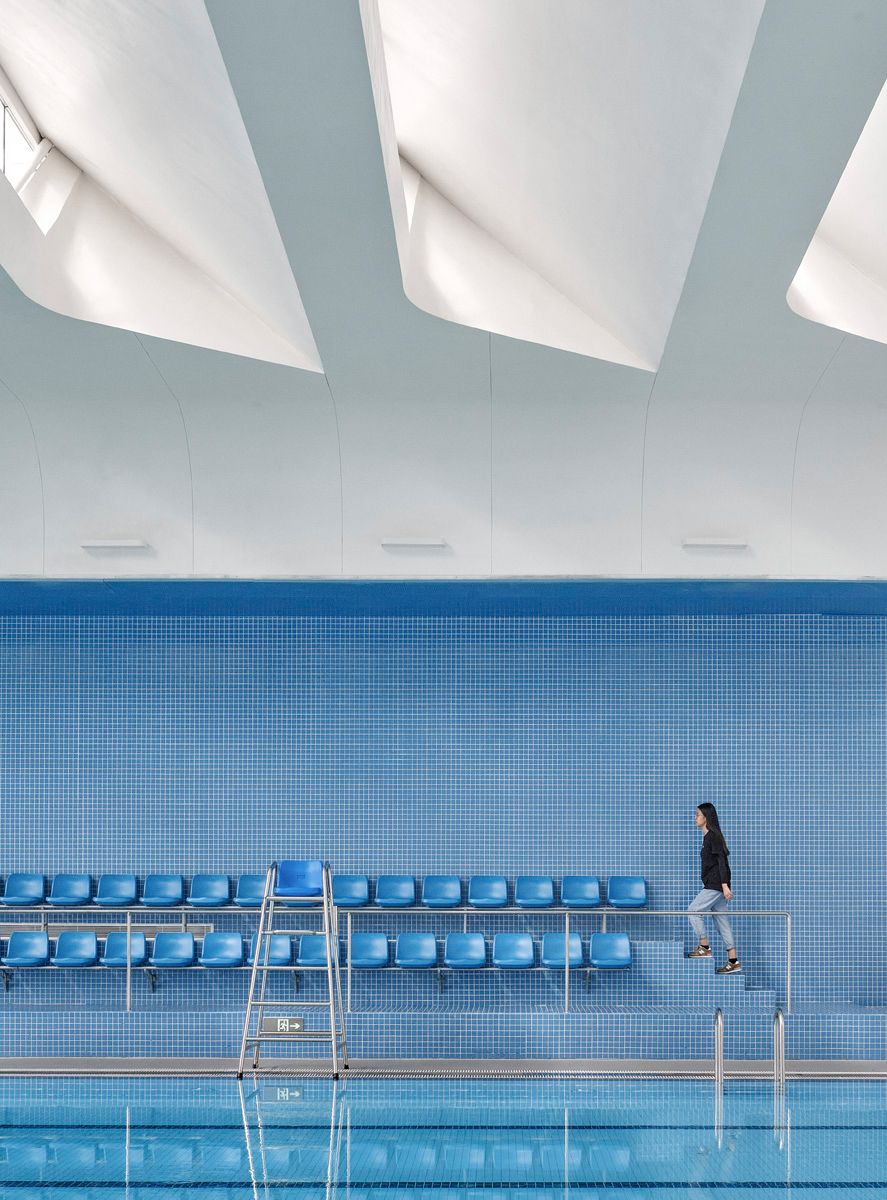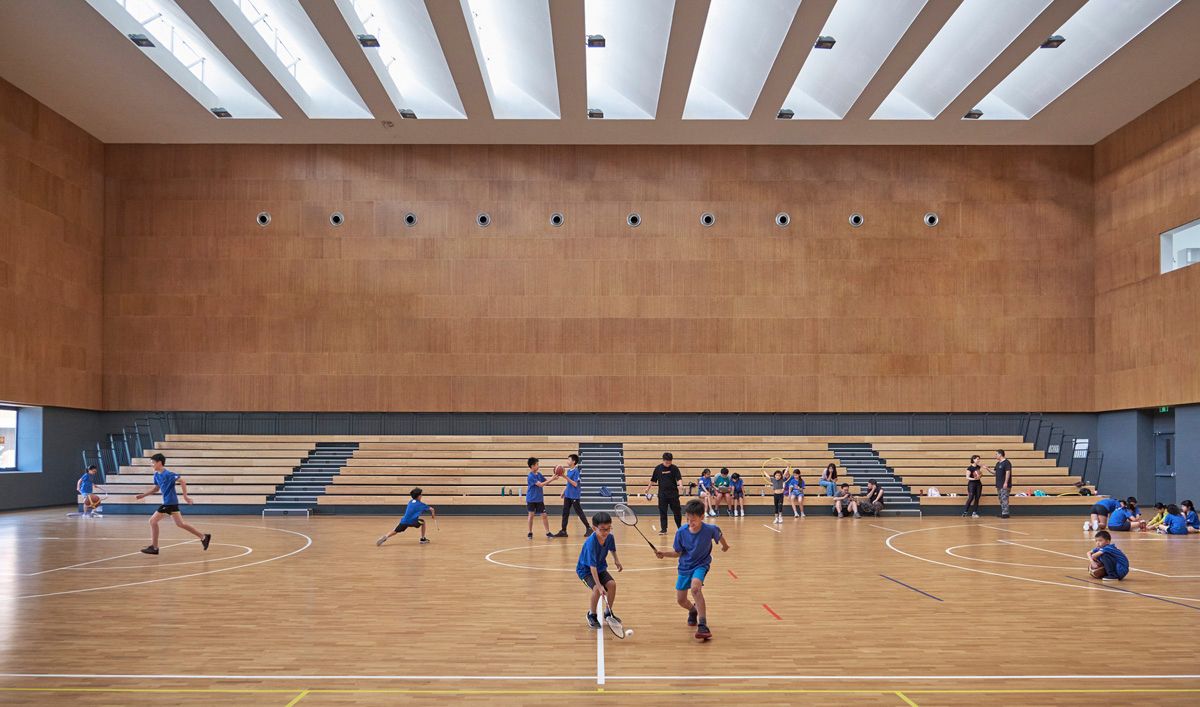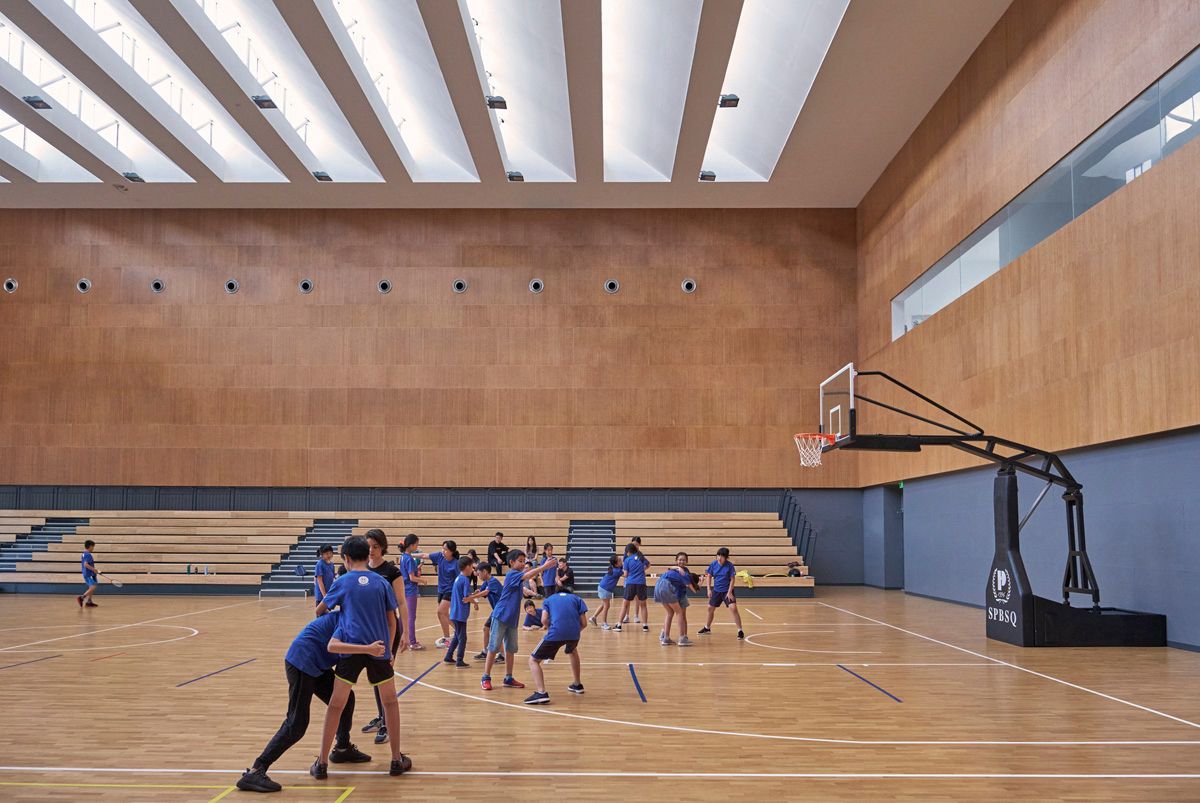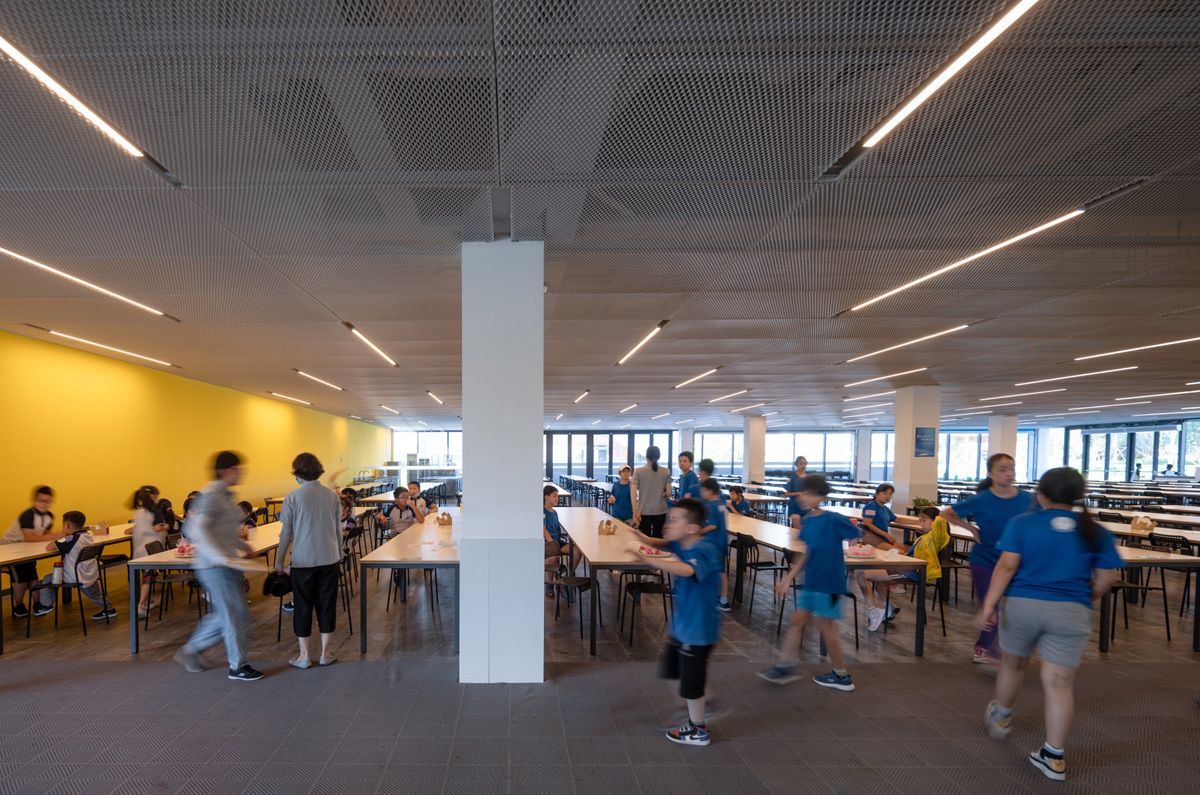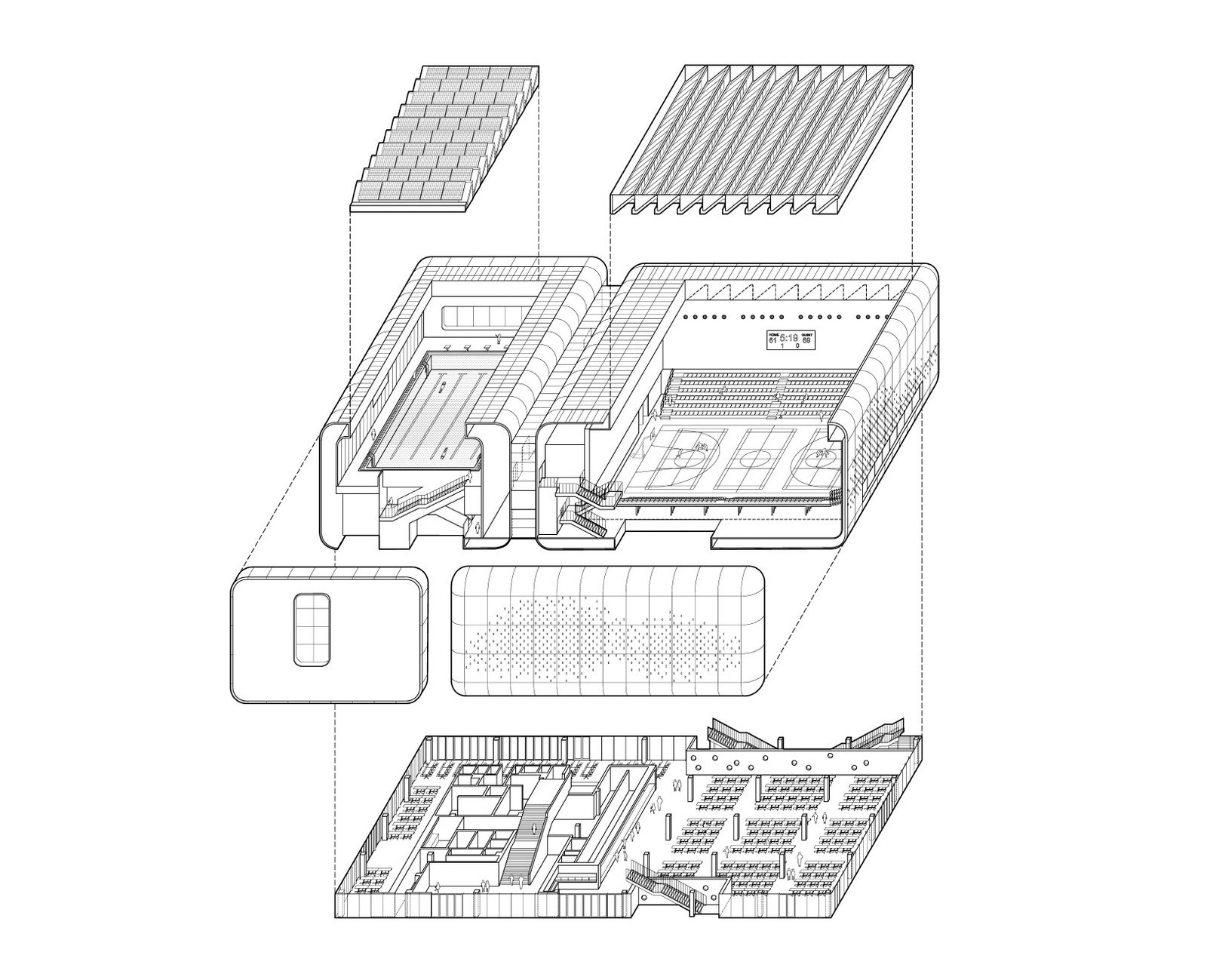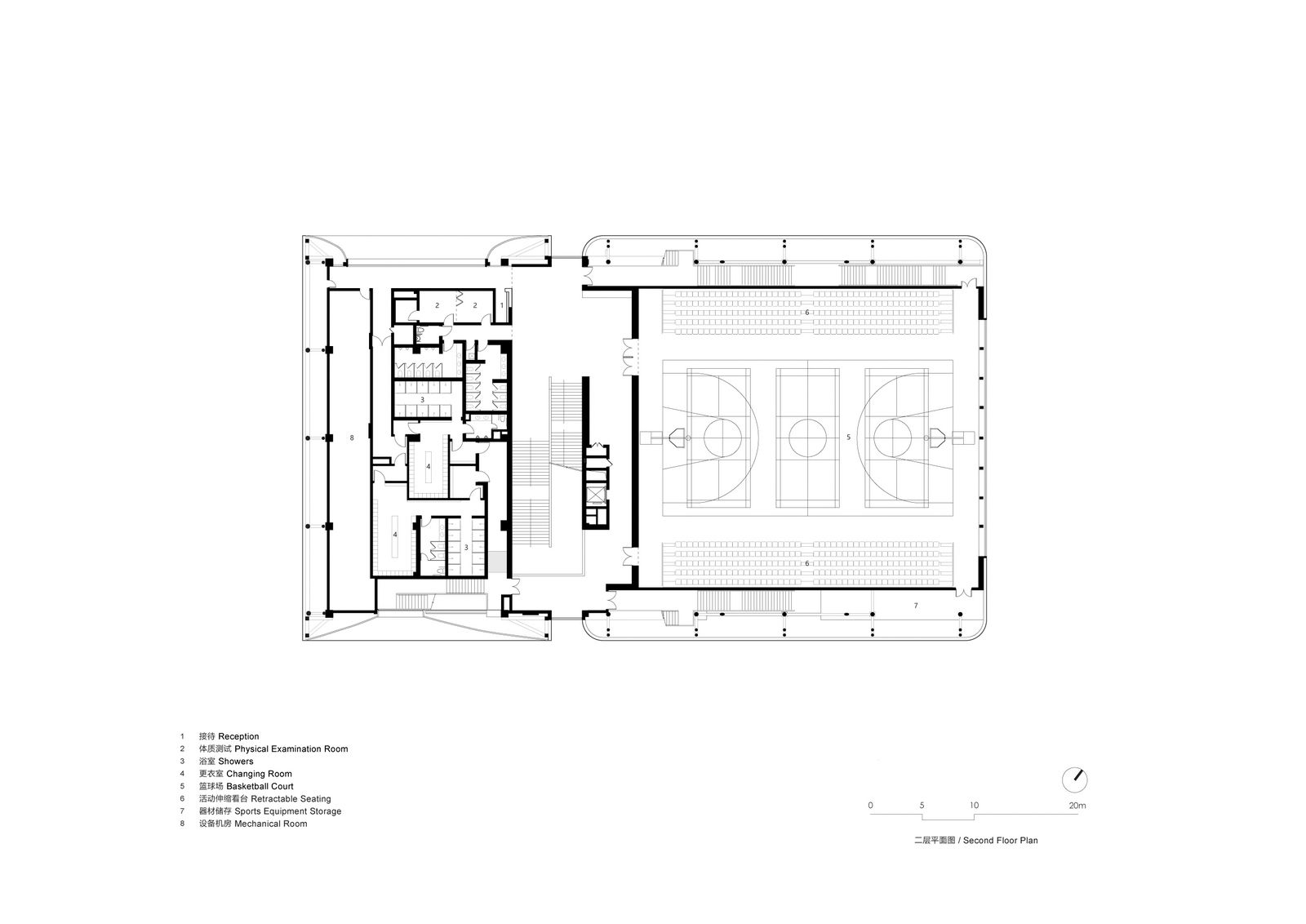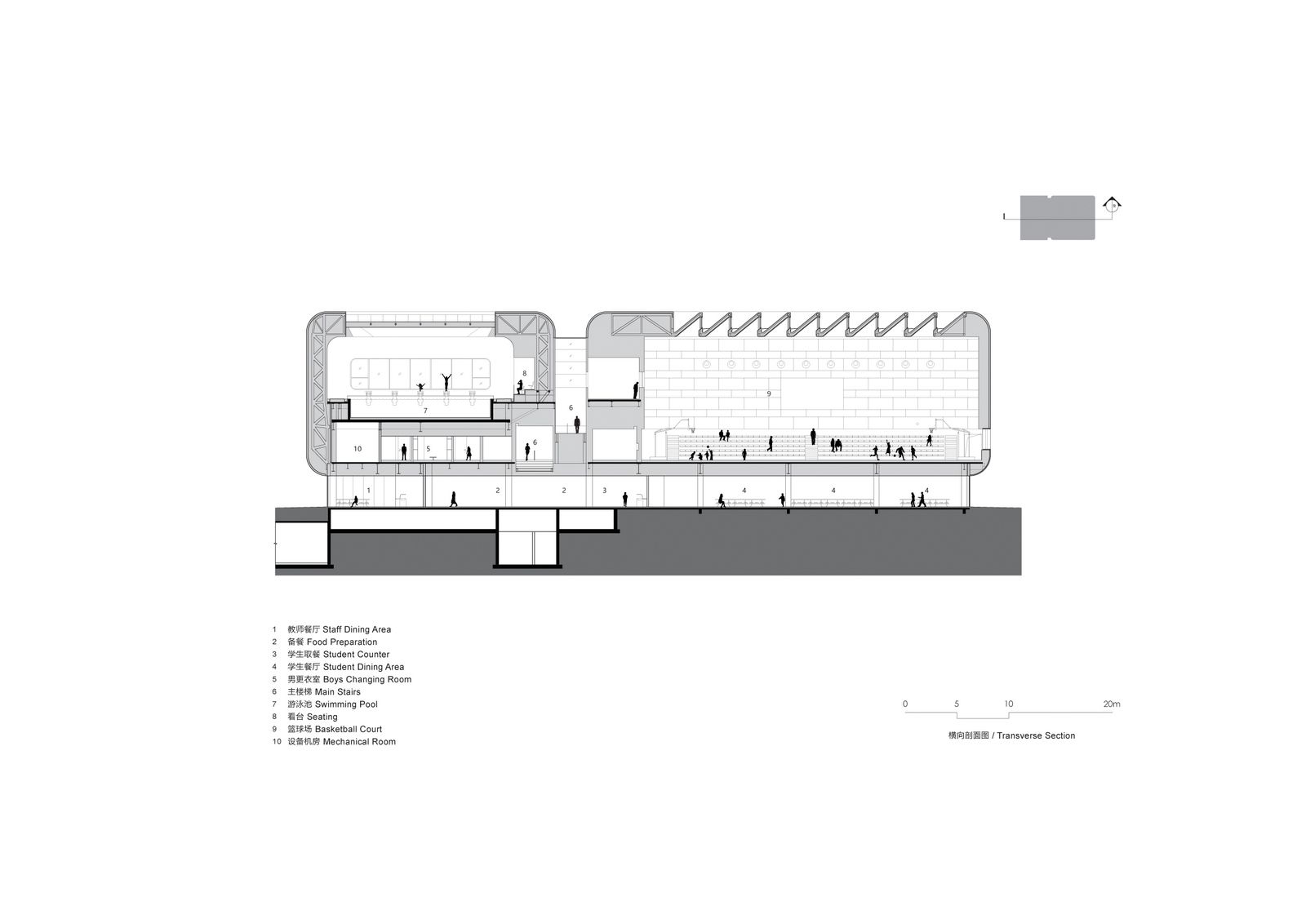Out of all the buildings on the Shanghai Qingpu Pinghe International School Campus designed by OPEN Architecture, the Sports Center gives the greatest impression of lightness—two round-cornered, translucent volumes floating above a transparent box. Inside this glass box, is the school’s canteen, and above it, seemingly suspended within two rectangular “Air Capsules”, are the campus gymnasium and swimming pool.
The building is intentionally sited on the north corner of the campus, where its proximity to the street and the secondary entrance of the school will facilitate use by the public during school holidays. Open to the surrounding community when students are not present, the building will provide important sport and study facilities for the rapidly developing city around it.
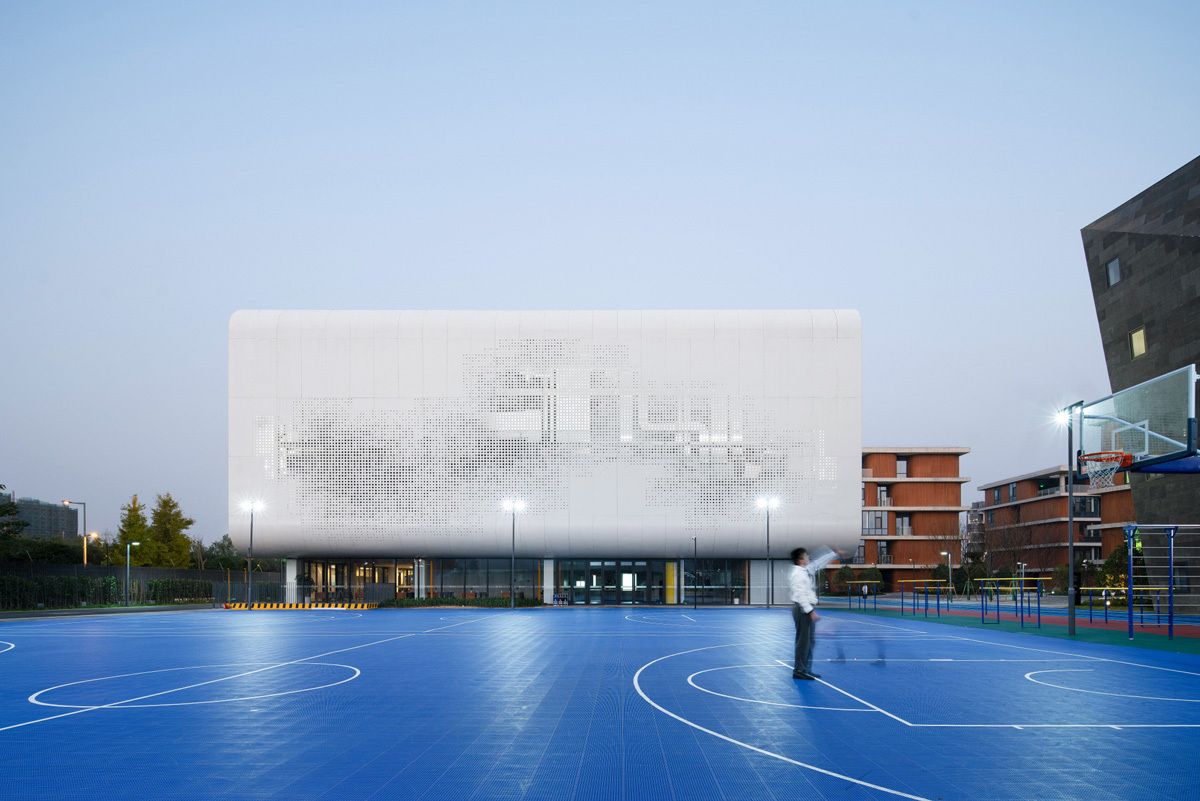
© Qingshan Wu
The swimming pool, gymnasium, and canteen—the campus’s three largest public programs—play with ideas of light and weightlessness. Translucent walls of thin tensioned film, polycarbonate paneling and perforated aluminum skin, soft colors, bubbly forms, and a glazed ground floor and atrium all work to cancel out the huge volume and weight of the programs within.
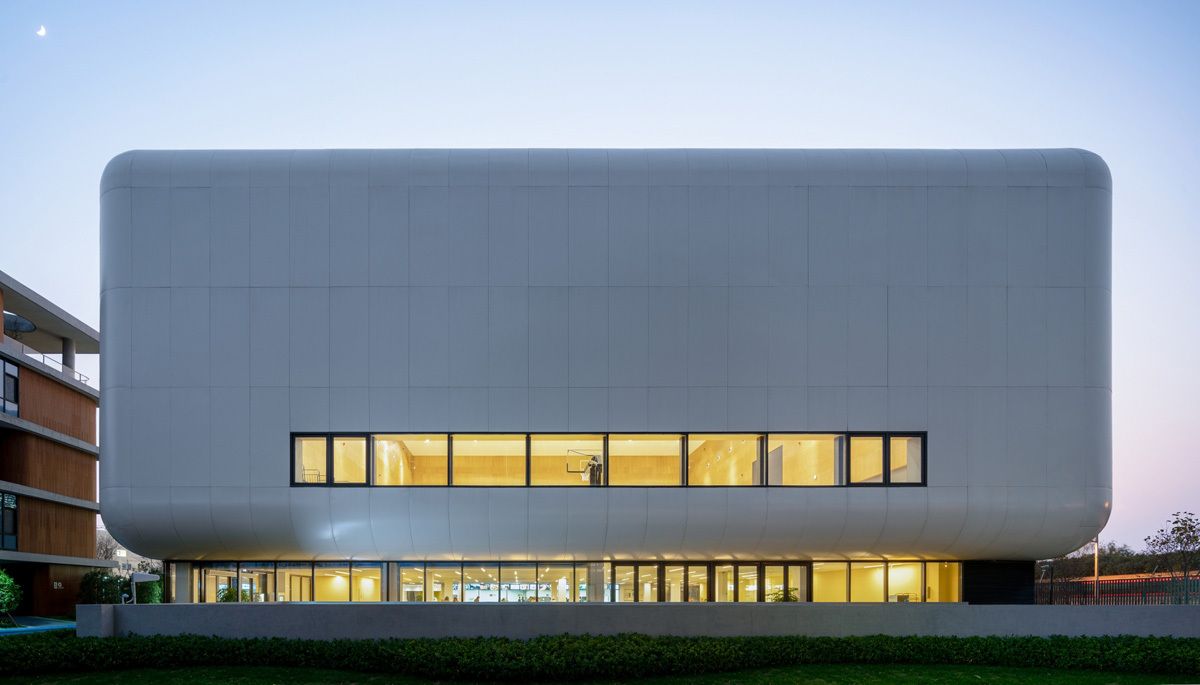
© Qingshan Wu
The first of these forms, a rectangular “Air Capsule” on the building’s eastern end, contains a multifunctional gymnasium. Along with smaller spaces, the gym contains a large hall that can be used for basketball, volleyball, badminton, taekwondo, fencing, and many other sports and school functions. The interior of the hall is bright, clean, and open, with a warm bamboo veneer and retractable stepped seating on two sides. An extended rectangular skylight on the long-span roof of the gymnasium brings daylight into the space below, removing the need for artificial illumination and allowing students to enjoy natural light while engaging in indoor activities.
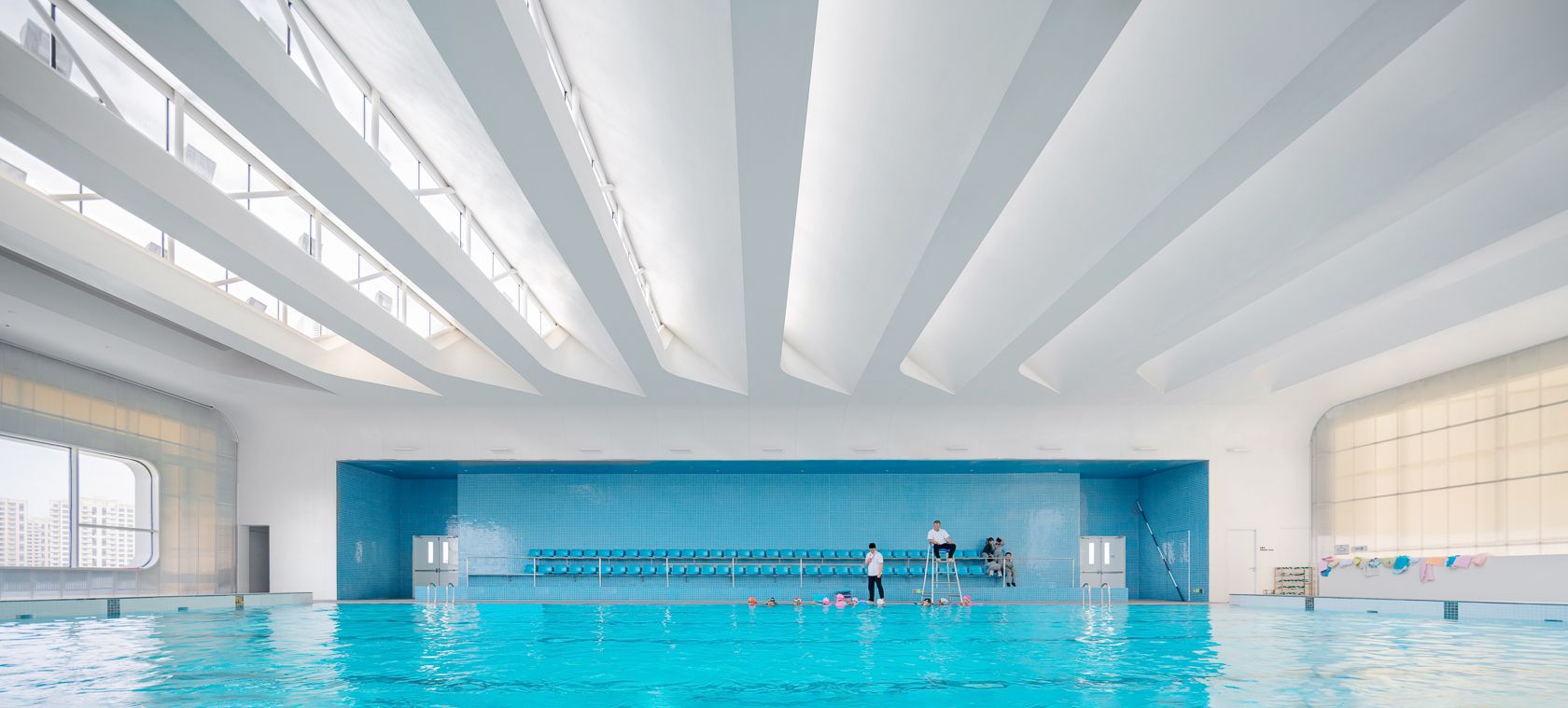
© Qingshan Wu
On the western end of the building, a smaller “Air Capsule” houses the swimming pool, equipped with five 25-meter swimming lanes and facilities such as changing rooms for swim meets and daily training. Like the gymnasium, the swimming pool is also bathed in natural light. Stripped skylights and a polycarbonate double-layered curtain wall system on the north and south facades make the space feel lightweight and translucent. Large windows at both ends give swimmers a panoramic view of the campus and the city and lend the “floating swimming pool” a bright and airy quality.
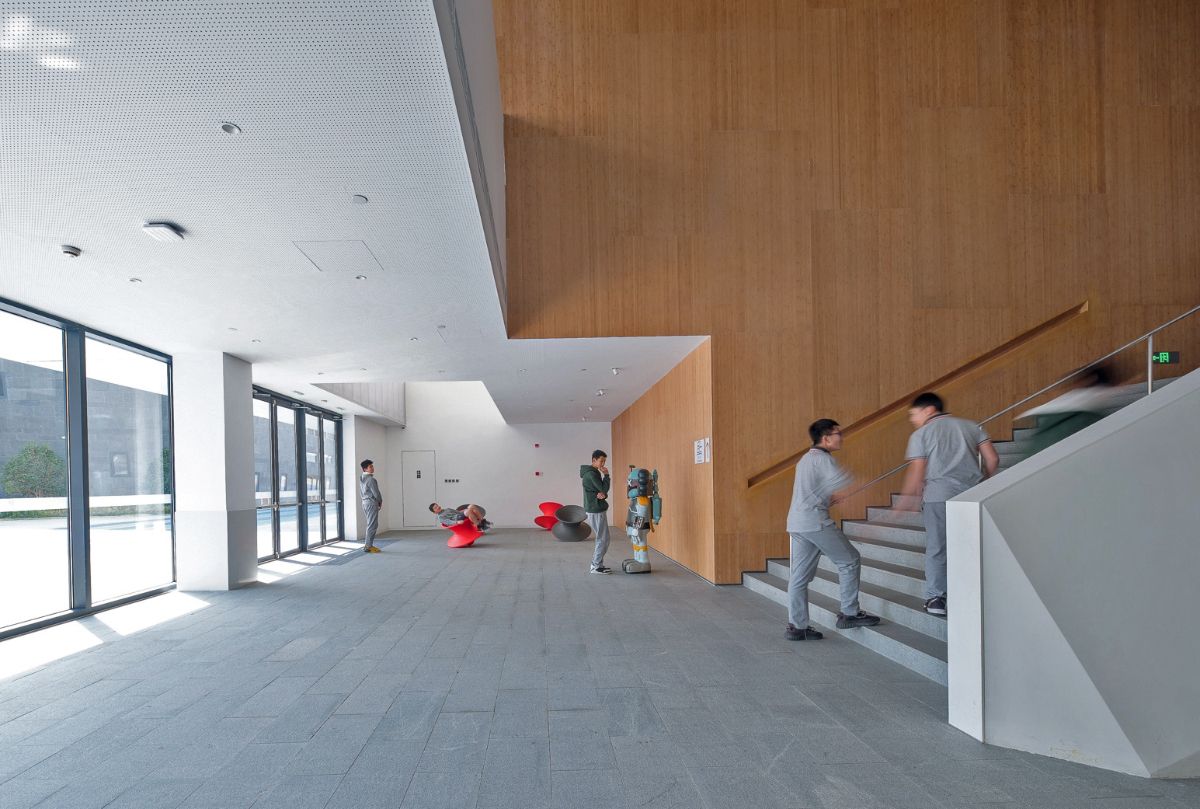
© Qingshan Wu
A 12-meter high glass atrium, flooded with sunlight by skylights, separates the two rectangular volumes holding the pool and the gym. Within the atrium, the main staircase offers a platform from which students can observe activities happening inside both spaces.
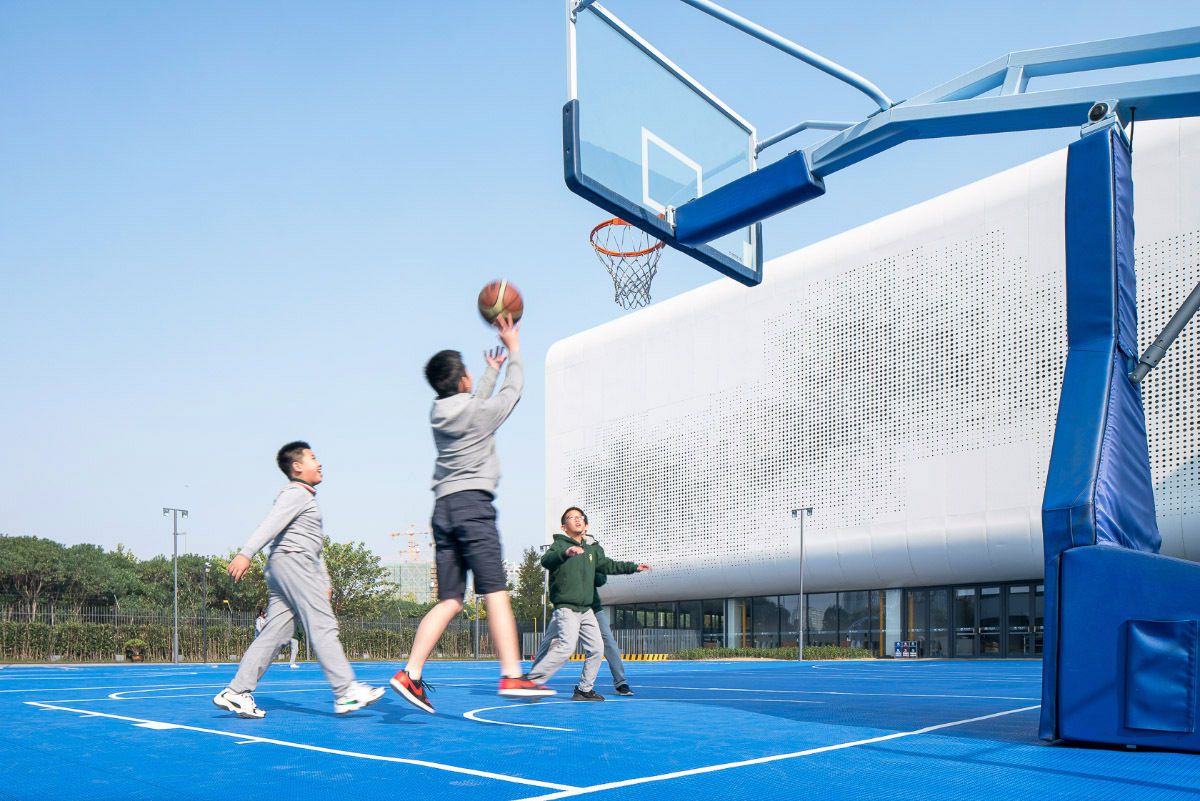
© Qingshan Wu
The canteen on the ground floor is a transparent box, offering panoramic views of the surrounding campus landscape and the many activities taking place within it. The canteen is divided by a kitchen into two dining areas, one for students and one for faculty and staff. Catering to the practical needs of the school, the canteen’s design is flexible and the space can be easily transformed for school-wide activities, fairs, and functions. Lighting and furniture in the space meet the necessary requirements for a wide range of uses. A canteen for eating and socializing one day may the next day be the largest study room in the school, able to comfortably accommodate up to a thousand students at once.
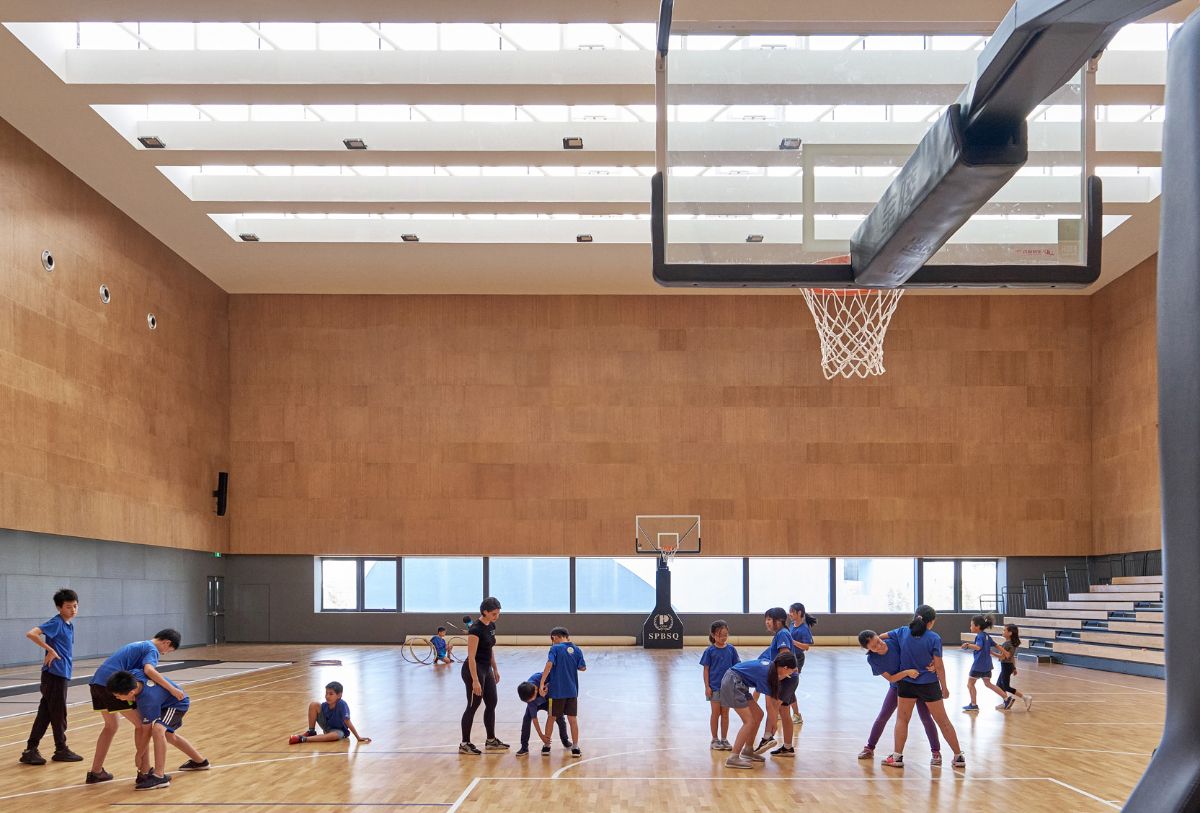
© Jonathan Leijonhufvud
The volumes containing the gym and pool cantilever out structurally, heightening the illusion of floating and ensuring the cleanness and simplicity of the sport and swimming facilities within. Concealed in the double-skin of each volume are both structure—a large-span space grid—and complex MEP equipment. The transparent material of the double-skin not only introduces moderated daylight but also serves as an effective means of ventilation, helping to reduce the use of air conditioning in spaces that usually consume huge amounts of energy.
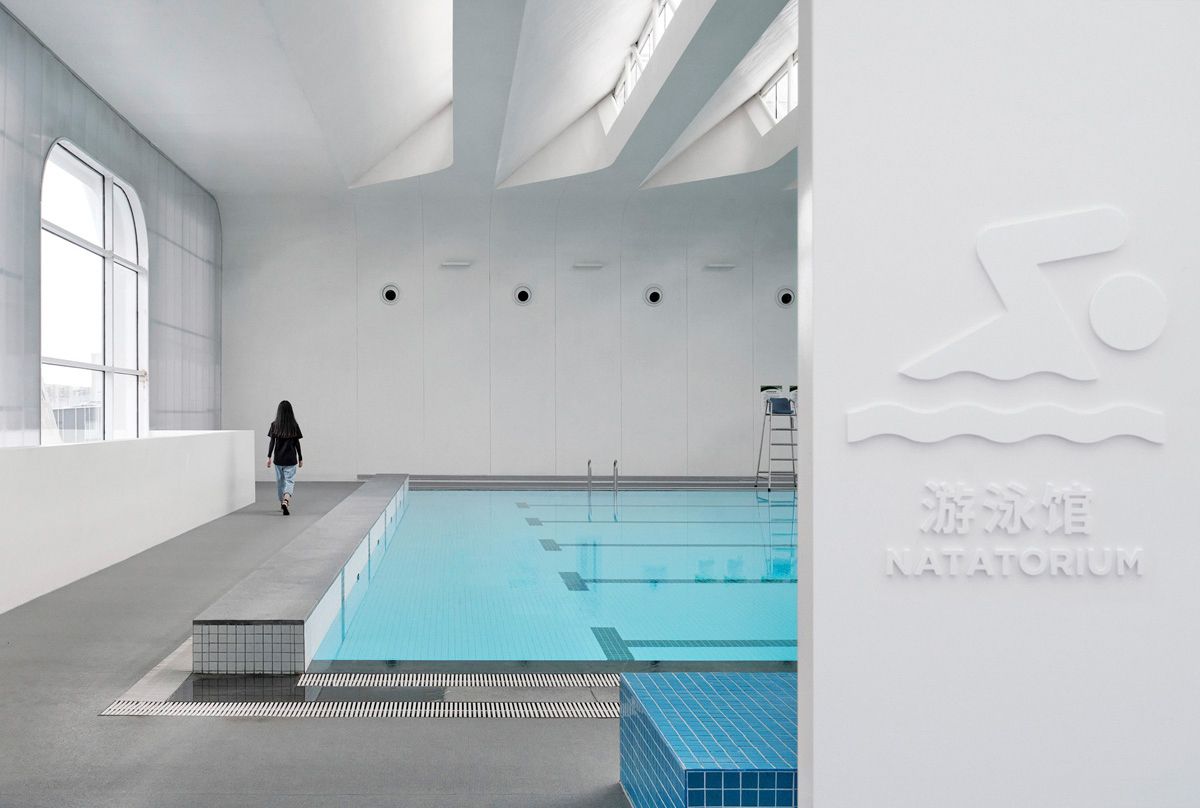
© Jonathan Leijonhufvud
When night falls, the stretched membrane on the façade of the swimming pool begins to glow, and the light of students at their evening studies shines out from the glass box of the canteen. The whole building becomes a warm lantern illuminating a corner of the campus, bright enough that additional lighting around it is not needed at night. The steel frame structure and MEP equipment are hidden between the double-skin are also visible through the membrane’s perforations. Abstract patterns, generated on the building façade from the interplay of structure and light, change slowly over time.
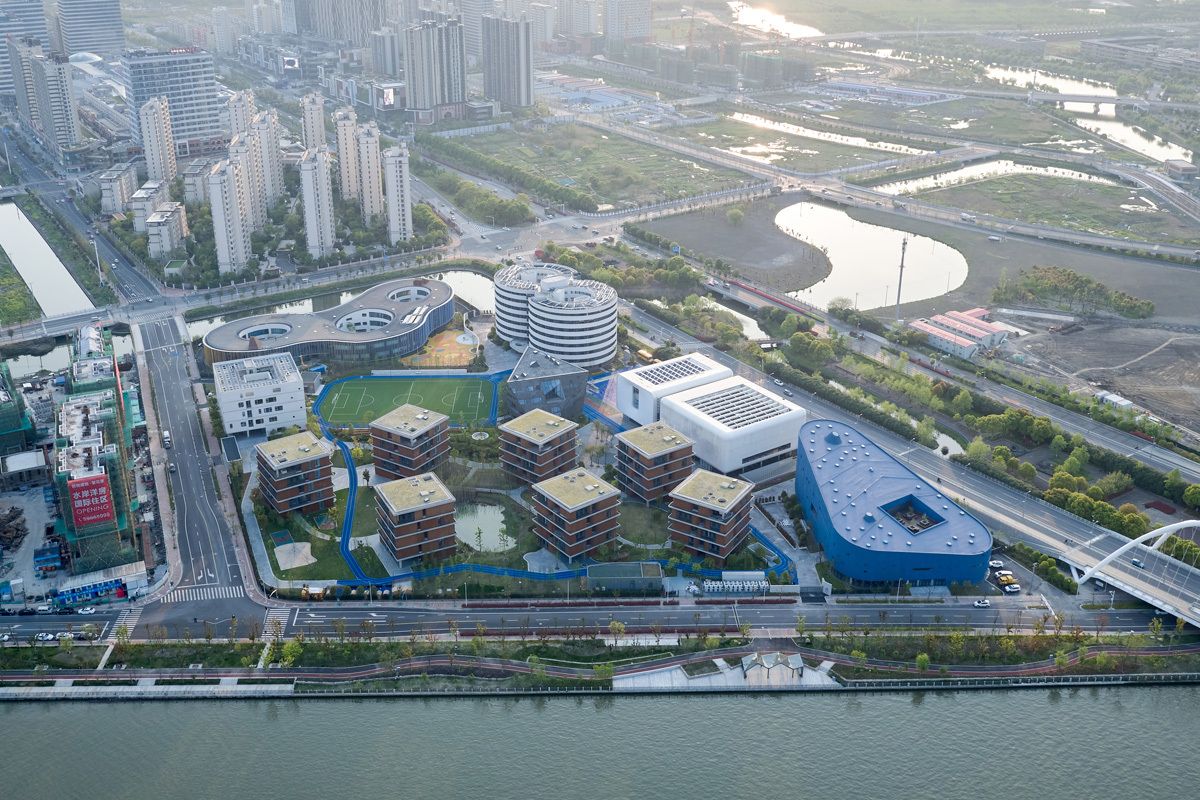
© Hao Chen
Project Info:
Architects: OPEN Architecture
Location: Shanghai, China
Area: 5690 m²
Project Year: 2020
Photographs: Hao Chen, Qingshan Wu, Jonathan Leijonhufvud
© Hao Chen
© Qingshan Wu
© Qingshan Wu
© Hao Chen
© Qingshan Wu
© Jonathan Leijonhufvud
© Qingshan Wu
© Jonathan Leijonhufvud
© Hao Chen
© Jonathan Leijonhufvud
© Qingshan Wu
© Jonathan Leijonhufvud
© Jonathan Leijonhufvud
© Jonathan Leijonhufvud
© Jonathan Leijonhufvud
© Qingshan Wu
© Qingshan Wu
Axonometric
Plan
Section


